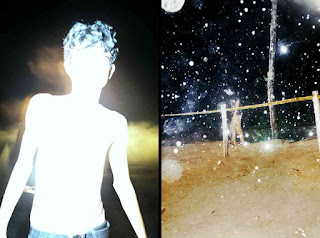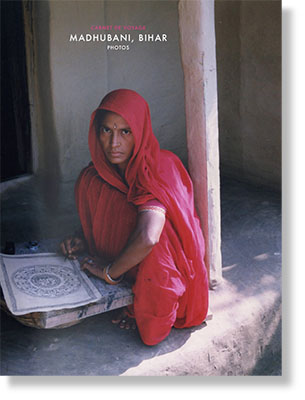
Source Livemint by Anindita Ghose
Six Indian galleries were at the fair: Gallery Chemould, Jhaveri Contemporary and Tarq from Mumbai; Vadehra Art Gallery and Gallery Espace from Delhi; and Experimenter from Kolkata. Rather than talking down the cause of representation, Jhaveri’s statement can be seen in a positive light. Everyone from Gorrill to the Guerrilla Girls has warned against the dangers of tokenism. So the fact that the Dodiya work has pride of place because it “brings in a lot of people" is ultimately a bigger victory. And, all these six galleries (one of them is led by a couple) have women on top.
> read more
samedi 20 avril 2019
At Art Basel Hong Kong, women show they can paint
vendredi 19 avril 2019
Remembering Haku Shah

Source Daily Pioneer by Sujata Prasad
An avant-garde in more ways than one, Shah mainstreamed rural, tribal, folk art and craft by bridging the chasm between elitism and art that has often been relegated to the eponymous category of folk or subaltern tribal expressions. His love for folk artists and artisans evolved as part of a burgeoning movement in the 50s for the creative intersection of craft and design. One of his first assignments was at the Weavers’ Service Centre established by Pupul Jayakar near the Opera House in Mumbai. An astonishing number of artists with different terms of engagement gravitated to the centres and elsewhere — Prabhakar Barwe, Jeram Patel, Jogen Chowdhury, Himmat Shah, Gautam Vaghela, Bhasker Kulkarni, Amrut Patel and Manu Parekh to name but just a few. Also budding scenographers like Rajeev Sethi and Martand Singh. KG Subramanyan came occasionally and created stunning standalone sculptures from the fibres of handspun wool. Haku Shah thrived in this hothouse of creativity. His next assignment, a long stint with the National Institute of Design, was also not an act of artistic hubris, but was driven by the need to research tribal art and crafts, rituals and belief systems that had intrigued him for a long time. In 1978 he was appointed advisor to the Mingei International Museum at San Diego in California .
> read more
jeudi 18 avril 2019
In the Lap of Nature

Source India Today by Rewati Rau
"The tree is where our atma (soul) resides and if we don't take care of it, we'll all perish," says Venkat Raman Singh Shyam, who belongs to the second generation of Pardhan Gond tradition of artists from MP. Now regarded as one of the prominent faces of tribal art in the country, the artist is as passionate about his humble upbringing as he is about mother earth. "I have grown up amongst animals, plants, rivers and birds and come from the same village which Rudyard Kipling has depicted in his Jungle Book. Nature is supreme for us," he says. That explains why Gond art is known to be replete with imageries of nature and folklore, vividly showing the beliefs firmly entrenched in this community.
> read more
This Exhibition At Piramal Museum Of Art Will Let You Experience Art Like Never Before

Source Mumbai Live by Apurva Srivastava
Ashvin Rajagopalan, Director of Piramal Art Foundation, highlighted the importance of interactive exhibitions such as these and said “An interactive art exhibition plays a vital role in creating more art and artists. We believe that when someone enters the space and finds themselves immersed in the possibility of being able to make something or create a work of art, that could ignite a spark, and lead them into wanting to pursue a career in the arts. The purpose of museums is to educate an audience. And hence, we believe that if we have a sustained audience, a community that we build over time, they will gain the knowledge and therefore, the skills required to appreciate art. This will definitely widen the possibilities of how people perceive art in the future.”
> read more
dimanche 14 avril 2019
There isn't, and there needn't be, such a thing as "Indian photography": Nathaniel Gaskell

Source Forbes India by Madhu Kapparath
Nathaniel Gaskell, co-founder and associate director of the Museum of Art & Photography in Bengaluru and Diva Gujral, PhD scholar at the department of History of Art, University College, London have co-authored Photography in India: A Visual History from the 1850s to the Present, the first in-depth survey of the remarkable story of photography in India. Covering 150 years and more than 100 Indian and international photographers, the book contains a wealth of previously unpublished material and lesser-known artistes. In a conversation with Forbes India, Gaskell (33) talks about the various complexities related to photography in India, and the challenges of distilling them into a book.
> read more
mardi 9 avril 2019
Feroze Gujral: India’s very own Peggy Guggenheim?

Source The National by Tania Bhattacharya
Gujral, 54, has been quietly leading the charge when it comes to promoting South Asian art in the Indian subcontinent and globally. Over the past decade, her foundation, co-founded with her architect husband Mohit Gujral (chief executive of DLF India, son of famous painter Satish Gujral and nephew of former Prime Minister of India, Inder Kumar Gujral), has supported innumerable artists irrespective of genre or form. It has also built art-specific spaces such as Studio G Spot and 24, Jor Bagh, and has organised subcontinental exhibitions at the likes of the Berlin Biennale and Tate Modern. The foundation has engaged intimately with India’s bottomless artistic heritage. Gujral is on the Kochi-Muziris Biennale’s board of trustees (she also co-founded the biennale, India’s first), and is on the boards of the Guggenheim Museum in New York and Serpentine Gallery in London. She was the force behind the V S Gaitonde: Painting as Process, Painting as Life exhibition at the Guggenheim in New York and My East is Your West, a collaborative show between India’s Shilpa Gupta and Pakistan’s Rashid Rana at the Venice Biennale, both in 2015. Her daughter Alaiia is also an artist who curates for Canvas Chicago. Art runs in the family, and she may well be India’s very own Peggy Guggenheim.
> read more
vendredi 5 avril 2019
One story told 12 times: Magnum photographer Sohrab Hura’s book explores rising violence in India

Source Scroll.In by Chanpreet Khurana
Around 2013, Hura noticed that WhatsApp messages to his parents were becoming increasingly political. As they were sent by family and friends, his parents often took the messages at face value. “There was credibility attached to them...this was before we had realised how political this is – and how entrenched.” The language of the messages prompted Hura to think about the underlying sense of violence in our world. Growing up in India in the 1980s and ’90s, Hura had lived through the assassinations of two Indian prime ministers, some of the bloodiest riots since Partition, cross-border hostilities and regime changes. Yet, something about the diffused aggression in the messages bothered him. He decided to start a new project to explore this feeling further.
> read more
Archives revue de presse
-
▼
2019
(132)
-
▼
avril
(7)
- At Art Basel Hong Kong, women show they can paint
- Remembering Haku Shah
- In the Lap of Nature
- This Exhibition At Piramal Museum Of Art Will Let ...
- There isn't, and there needn't be, such a thing as...
- Feroze Gujral: India’s very own Peggy Guggenheim?
- One story told 12 times: Magnum photographer Sohra...
-
▼
avril
(7)



















